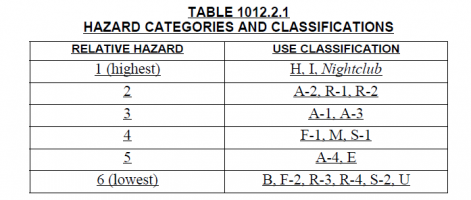Famine
REGISTERED
Hello all,
I am leasing a second floor of a historic building. It's been completely remodeled. I am shooting for A-2 assembly for a bar with a max occ around 80 people when I was hit by the city that we need to have a sprinkler system. This is due to the 903.2.1.2 code that states if the fire area is located on any other floor other than the level of discharge, must have a fire sprinkler. That's fine, until you realize that installing a commercial sprinkler system is a major undertaken if you have to tap into the main water line in the sidewalk.
Talking with others, it seems a risk based hazard analysis may be an option to avoid this. I was wondering if anyone could explain what that means in the context of this issue? Is that essentially having someone perform a risk analysis to prove such a system is not needed on the second floor? If so, anyone have any experience on how hard that is?
Currently, the recommendation is to shoot for 49 until a system can be installed if such a system can be installed at all being the costs alone seem high.
I am leasing a second floor of a historic building. It's been completely remodeled. I am shooting for A-2 assembly for a bar with a max occ around 80 people when I was hit by the city that we need to have a sprinkler system. This is due to the 903.2.1.2 code that states if the fire area is located on any other floor other than the level of discharge, must have a fire sprinkler. That's fine, until you realize that installing a commercial sprinkler system is a major undertaken if you have to tap into the main water line in the sidewalk.
Talking with others, it seems a risk based hazard analysis may be an option to avoid this. I was wondering if anyone could explain what that means in the context of this issue? Is that essentially having someone perform a risk analysis to prove such a system is not needed on the second floor? If so, anyone have any experience on how hard that is?
Currently, the recommendation is to shoot for 49 until a system can be installed if such a system can be installed at all being the costs alone seem high.

